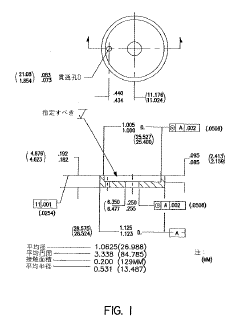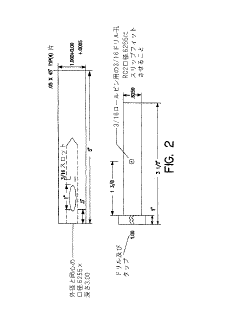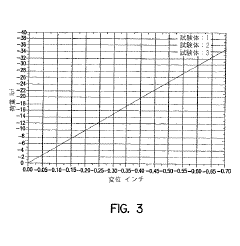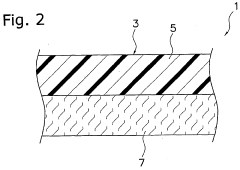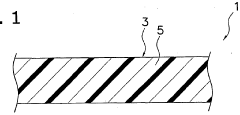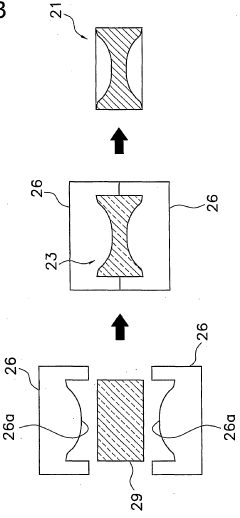How to Minimize Wear and Tear with PTFE‑Based Bearings?
JUN 27, 20259 MIN READ
Generate Your Research Report Instantly with AI Agent
Patsnap Eureka helps you evaluate technical feasibility & market potential.
PTFE Bearing Evolution
PTFE (polytetrafluoroethylene) bearings have undergone significant evolution since their inception in the mid-20th century. The journey began with the accidental discovery of PTFE by Roy Plunkett in 1938, leading to its commercialization under the brand name Teflon in 1945. Initially, PTFE's potential in bearing applications was not immediately recognized due to its soft nature and poor wear resistance.
The 1960s marked a turning point in PTFE bearing technology. Researchers discovered that by adding fillers to PTFE, its mechanical properties could be significantly improved. This led to the development of composite PTFE materials, which exhibited enhanced wear resistance and load-bearing capacity. Common fillers included glass fibers, carbon fibers, and bronze particles, each imparting unique properties to the composite.
In the 1970s and 1980s, advancements in manufacturing processes allowed for more precise control over PTFE bearing production. Techniques such as sintering and molding were refined, enabling the creation of bearings with more complex geometries and tighter tolerances. This period also saw the introduction of PTFE-lined bearings, where a thin layer of PTFE was bonded to a metal backing, combining the low friction properties of PTFE with the structural strength of metal.
The 1990s brought about a focus on optimizing PTFE composites for specific applications. Researchers began tailoring filler compositions and concentrations to meet the demands of various industries, from automotive to aerospace. This era also saw the development of self-lubricating PTFE bearings, which incorporated solid lubricants within the PTFE matrix, further reducing friction and wear.
The turn of the millennium ushered in a new phase of innovation in PTFE bearing technology. Nanotechnology began to play a significant role, with the introduction of nanoscale fillers that could dramatically improve the wear resistance and load-bearing capacity of PTFE bearings. Additionally, surface modification techniques, such as plasma treatment and chemical etching, were developed to enhance the bonding between PTFE and other materials, improving the overall performance and longevity of composite bearings.
Recent years have seen a focus on sustainability and environmental considerations in PTFE bearing design. Efforts have been made to develop eco-friendly alternatives to traditional PTFE composites, including the use of bio-based fillers and recyclable materials. Furthermore, advancements in computational modeling and simulation have allowed for more precise prediction of bearing performance, enabling designers to optimize PTFE bearing designs for specific applications with greater accuracy.
As we look to the future, the evolution of PTFE bearings continues to be driven by the demand for higher performance, longer lifespan, and reduced environmental impact. Emerging technologies, such as 3D printing of PTFE composites and the development of smart, self-monitoring bearings, promise to further revolutionize the field, offering new possibilities for minimizing wear and tear in a wide range of applications.
The 1960s marked a turning point in PTFE bearing technology. Researchers discovered that by adding fillers to PTFE, its mechanical properties could be significantly improved. This led to the development of composite PTFE materials, which exhibited enhanced wear resistance and load-bearing capacity. Common fillers included glass fibers, carbon fibers, and bronze particles, each imparting unique properties to the composite.
In the 1970s and 1980s, advancements in manufacturing processes allowed for more precise control over PTFE bearing production. Techniques such as sintering and molding were refined, enabling the creation of bearings with more complex geometries and tighter tolerances. This period also saw the introduction of PTFE-lined bearings, where a thin layer of PTFE was bonded to a metal backing, combining the low friction properties of PTFE with the structural strength of metal.
The 1990s brought about a focus on optimizing PTFE composites for specific applications. Researchers began tailoring filler compositions and concentrations to meet the demands of various industries, from automotive to aerospace. This era also saw the development of self-lubricating PTFE bearings, which incorporated solid lubricants within the PTFE matrix, further reducing friction and wear.
The turn of the millennium ushered in a new phase of innovation in PTFE bearing technology. Nanotechnology began to play a significant role, with the introduction of nanoscale fillers that could dramatically improve the wear resistance and load-bearing capacity of PTFE bearings. Additionally, surface modification techniques, such as plasma treatment and chemical etching, were developed to enhance the bonding between PTFE and other materials, improving the overall performance and longevity of composite bearings.
Recent years have seen a focus on sustainability and environmental considerations in PTFE bearing design. Efforts have been made to develop eco-friendly alternatives to traditional PTFE composites, including the use of bio-based fillers and recyclable materials. Furthermore, advancements in computational modeling and simulation have allowed for more precise prediction of bearing performance, enabling designers to optimize PTFE bearing designs for specific applications with greater accuracy.
As we look to the future, the evolution of PTFE bearings continues to be driven by the demand for higher performance, longer lifespan, and reduced environmental impact. Emerging technologies, such as 3D printing of PTFE composites and the development of smart, self-monitoring bearings, promise to further revolutionize the field, offering new possibilities for minimizing wear and tear in a wide range of applications.
Market Demand Analysis
The market demand for PTFE-based bearings has been steadily increasing due to their unique properties and wide-ranging applications across various industries. These bearings offer exceptional low friction, high wear resistance, and chemical inertness, making them ideal for challenging environments where traditional bearings may fail.
In the automotive sector, PTFE-based bearings are gaining traction as manufacturers seek to improve fuel efficiency and reduce maintenance costs. The growing emphasis on electric vehicles has further boosted demand, as these bearings are well-suited for the specific requirements of electric powertrains. The automotive bearing market is projected to grow significantly in the coming years, with PTFE-based bearings capturing an increasing share.
The aerospace industry represents another major market for PTFE-based bearings. As aircraft manufacturers strive for lighter and more efficient designs, these bearings offer an excellent solution for reducing weight while maintaining performance. The aerospace bearing market is expected to expand substantially, driven by increasing air traffic and the need for more fuel-efficient aircraft.
In the industrial machinery sector, PTFE-based bearings are finding applications in a wide range of equipment, from heavy machinery to precision instruments. The ability of these bearings to operate in harsh conditions, such as high temperatures or corrosive environments, makes them particularly valuable in this sector. The industrial machinery bearing market is forecasted to grow steadily, with PTFE-based bearings playing a crucial role in improving equipment reliability and longevity.
The medical device industry is another area where PTFE-based bearings are seeing increased adoption. Their biocompatibility and low friction properties make them ideal for use in various medical devices and implants. As the global population ages and healthcare spending increases, the demand for advanced medical devices is expected to rise, driving growth in the market for PTFE-based bearings in this sector.
Environmental concerns and stricter regulations are also contributing to the growing demand for PTFE-based bearings. Their ability to operate without lubrication in many applications reduces the need for potentially harmful lubricants, aligning with sustainability goals across industries. This factor is expected to further boost market growth in the coming years.
Despite the positive outlook, challenges remain in the widespread adoption of PTFE-based bearings. These include higher initial costs compared to traditional bearings and the need for specialized design considerations. However, as manufacturing processes improve and the long-term benefits become more widely recognized, these barriers are expected to diminish.
In the automotive sector, PTFE-based bearings are gaining traction as manufacturers seek to improve fuel efficiency and reduce maintenance costs. The growing emphasis on electric vehicles has further boosted demand, as these bearings are well-suited for the specific requirements of electric powertrains. The automotive bearing market is projected to grow significantly in the coming years, with PTFE-based bearings capturing an increasing share.
The aerospace industry represents another major market for PTFE-based bearings. As aircraft manufacturers strive for lighter and more efficient designs, these bearings offer an excellent solution for reducing weight while maintaining performance. The aerospace bearing market is expected to expand substantially, driven by increasing air traffic and the need for more fuel-efficient aircraft.
In the industrial machinery sector, PTFE-based bearings are finding applications in a wide range of equipment, from heavy machinery to precision instruments. The ability of these bearings to operate in harsh conditions, such as high temperatures or corrosive environments, makes them particularly valuable in this sector. The industrial machinery bearing market is forecasted to grow steadily, with PTFE-based bearings playing a crucial role in improving equipment reliability and longevity.
The medical device industry is another area where PTFE-based bearings are seeing increased adoption. Their biocompatibility and low friction properties make them ideal for use in various medical devices and implants. As the global population ages and healthcare spending increases, the demand for advanced medical devices is expected to rise, driving growth in the market for PTFE-based bearings in this sector.
Environmental concerns and stricter regulations are also contributing to the growing demand for PTFE-based bearings. Their ability to operate without lubrication in many applications reduces the need for potentially harmful lubricants, aligning with sustainability goals across industries. This factor is expected to further boost market growth in the coming years.
Despite the positive outlook, challenges remain in the widespread adoption of PTFE-based bearings. These include higher initial costs compared to traditional bearings and the need for specialized design considerations. However, as manufacturing processes improve and the long-term benefits become more widely recognized, these barriers are expected to diminish.
Technical Challenges
The development of PTFE-based bearings has significantly improved the performance of various mechanical systems. However, several technical challenges persist in minimizing wear and tear in these bearings. One of the primary issues is the inherent softness of PTFE material, which can lead to deformation under high loads or prolonged use. This characteristic limits the load-bearing capacity of PTFE-based bearings and potentially shortens their lifespan in demanding applications.
Another significant challenge is the cold flow phenomenon, also known as creep, which is particularly pronounced in PTFE materials. Under constant stress, PTFE tends to deform plastically over time, even at room temperature. This behavior can result in dimensional changes and reduced bearing performance, especially in precision applications where maintaining tight tolerances is crucial.
The thermal management of PTFE-based bearings presents another technical hurdle. While PTFE has excellent low-friction properties, it also has poor thermal conductivity. This combination can lead to localized heat buildup during operation, potentially causing thermal expansion, increased wear, and in extreme cases, material degradation. Developing effective heat dissipation mechanisms without compromising the bearing's low-friction characteristics remains a complex engineering challenge.
Adhesive wear is another concern in PTFE-based bearings, particularly in dry or boundary lubrication conditions. Although PTFE has inherent non-stick properties, under certain conditions, it can still experience adhesive wear, where small particles of the bearing material transfer to the mating surface. This transfer film can initially provide some protection, but excessive transfer can lead to increased friction and accelerated wear over time.
The environmental sensitivity of PTFE-based bearings also poses challenges. While these bearings generally perform well in a wide range of conditions, extreme temperatures, chemical exposure, and high-humidity environments can affect their wear resistance and overall performance. Developing PTFE composites that maintain optimal properties across diverse operating conditions remains an ongoing area of research and development.
Lastly, the integration of PTFE-based bearings into complex mechanical systems presents design and manufacturing challenges. Ensuring proper alignment, managing thermal expansion differentials between the bearing and surrounding components, and developing effective sealing solutions to prevent contamination are all critical factors that engineers must address to minimize wear and tear effectively.
Another significant challenge is the cold flow phenomenon, also known as creep, which is particularly pronounced in PTFE materials. Under constant stress, PTFE tends to deform plastically over time, even at room temperature. This behavior can result in dimensional changes and reduced bearing performance, especially in precision applications where maintaining tight tolerances is crucial.
The thermal management of PTFE-based bearings presents another technical hurdle. While PTFE has excellent low-friction properties, it also has poor thermal conductivity. This combination can lead to localized heat buildup during operation, potentially causing thermal expansion, increased wear, and in extreme cases, material degradation. Developing effective heat dissipation mechanisms without compromising the bearing's low-friction characteristics remains a complex engineering challenge.
Adhesive wear is another concern in PTFE-based bearings, particularly in dry or boundary lubrication conditions. Although PTFE has inherent non-stick properties, under certain conditions, it can still experience adhesive wear, where small particles of the bearing material transfer to the mating surface. This transfer film can initially provide some protection, but excessive transfer can lead to increased friction and accelerated wear over time.
The environmental sensitivity of PTFE-based bearings also poses challenges. While these bearings generally perform well in a wide range of conditions, extreme temperatures, chemical exposure, and high-humidity environments can affect their wear resistance and overall performance. Developing PTFE composites that maintain optimal properties across diverse operating conditions remains an ongoing area of research and development.
Lastly, the integration of PTFE-based bearings into complex mechanical systems presents design and manufacturing challenges. Ensuring proper alignment, managing thermal expansion differentials between the bearing and surrounding components, and developing effective sealing solutions to prevent contamination are all critical factors that engineers must address to minimize wear and tear effectively.
Current PTFE Solutions
01 PTFE composite materials for bearings
PTFE-based composite materials are developed for bearings to enhance wear resistance and reduce friction. These composites often incorporate fillers such as carbon fibers, glass fibers, or metal particles to improve mechanical properties and durability. The combination of PTFE's low friction characteristics with reinforcing materials results in bearings that can withstand higher loads and operate in harsh environments.- PTFE composite materials for bearings: PTFE-based composite materials are developed for bearings to improve wear resistance and reduce friction. These composites often incorporate fillers or reinforcing materials to enhance the mechanical properties and durability of the bearings. The combination of PTFE with other materials can significantly improve the wear and tear characteristics of the bearings.
- Surface treatment and coating techniques: Various surface treatment and coating techniques are applied to PTFE-based bearings to enhance their wear resistance. These methods may include plasma treatment, chemical modification, or the application of specialized coatings. Such treatments can improve the adhesion of PTFE to other materials and create a more durable bearing surface.
- Lubrication strategies for PTFE bearings: Effective lubrication strategies are developed to minimize wear and tear in PTFE-based bearings. These may include the use of specialized lubricants, self-lubricating materials, or the incorporation of lubricant reservoirs within the bearing structure. Proper lubrication can significantly extend the lifespan of PTFE bearings and reduce friction-related wear.
- Design optimization for wear reduction: The design of PTFE-based bearings is optimized to minimize wear and tear. This includes considerations such as load distribution, contact area, and thermal management. Advanced design techniques, such as finite element analysis, are used to identify and address potential wear hotspots and improve overall bearing performance.
- Monitoring and maintenance techniques: Innovative monitoring and maintenance techniques are developed for PTFE-based bearings to detect and prevent excessive wear. These may include the use of sensors, predictive maintenance algorithms, or specialized inspection methods. Regular monitoring and maintenance can help identify wear issues early and extend the operational life of the bearings.
02 Surface treatment and coating techniques
Various surface treatment and coating methods are applied to PTFE-based bearings to enhance their wear resistance. These techniques may include plasma treatment, chemical etching, or the application of specialized coatings. Such treatments can improve the adhesion of PTFE to substrates, increase hardness, and create a more durable bearing surface that resists wear and tear under high-stress conditions.Expand Specific Solutions03 Lubrication systems for PTFE bearings
Advanced lubrication systems are developed to work in conjunction with PTFE-based bearings, further reducing friction and wear. These systems may include solid lubricants, oil-impregnated materials, or self-lubricating composites that release lubricants during operation. The integration of lubrication with PTFE bearings helps to extend their lifespan and maintain performance under challenging operating conditions.Expand Specific Solutions04 Design optimization for wear reduction
Innovative bearing designs are created to optimize the performance of PTFE-based materials and minimize wear. These designs may include specific geometries, load distribution patterns, or hybrid structures that combine PTFE with other materials. By carefully engineering the bearing structure, designers can reduce stress concentrations, improve heat dissipation, and enhance overall durability.Expand Specific Solutions05 Monitoring and maintenance strategies
Advanced monitoring and maintenance techniques are developed to track the wear and tear of PTFE-based bearings in real-time. These may include sensor systems, predictive maintenance algorithms, or specialized inspection methods. By implementing proactive maintenance strategies, the lifespan of PTFE bearings can be extended, and unexpected failures can be prevented, ensuring optimal performance in critical applications.Expand Specific Solutions
Key Industry Players
The market for PTFE-based bearings is in a mature growth stage, with a global market size estimated to be in the billions of dollars. The technology has reached a high level of maturity, with ongoing innovations focused on enhancing performance and longevity. Key players like W. L. Gore & Associates, Federal-Mogul, and Daikin Industries are driving advancements in PTFE-based bearing technology. These companies, along with others such as KS Gleitlager and Zhejiang Changsheng Sliding Bearings, are competing to develop more durable and efficient bearings for various industries, including automotive, aerospace, and industrial machinery. The competitive landscape is characterized by a mix of established multinational corporations and specialized bearing manufacturers, all striving to minimize wear and tear through innovative PTFE-based solutions.
W. L. Gore & Associates, Inc.
Technical Solution: W. L. Gore & Associates has developed advanced PTFE-based bearing solutions to minimize wear and tear. Their technology incorporates a unique expanded PTFE (ePTFE) structure that provides superior lubrication and load distribution. The company's bearings feature a self-lubricating composite material that combines PTFE with other high-performance polymers and fillers[1]. This composite structure allows for reduced friction and improved wear resistance in both dry and lubricated conditions. Gore's bearings also incorporate a proprietary surface treatment that enhances the material's tribological properties, resulting in extended service life and reduced maintenance requirements[2]. The company's bearings are designed to operate effectively in a wide range of temperatures and harsh chemical environments, making them suitable for various industrial applications[3].
Strengths: Excellent wear resistance, low friction, self-lubricating properties, and chemical resistance. Suitable for harsh environments and high-temperature applications. Weaknesses: Potentially higher initial cost compared to traditional bearing materials, and limited load-bearing capacity in certain high-stress applications.
DAIKIN INDUSTRIES Ltd.
Technical Solution: DAIKIN INDUSTRIES has developed a range of PTFE-based bearing materials and coatings to minimize wear and tear. Their technology focuses on the optimization of PTFE microstructure and the incorporation of advanced fillers to enhance performance. DAIKIN's bearings utilize a proprietary PTFE compound that exhibits improved wear resistance and load-bearing capacity compared to standard PTFE[4]. The company has also developed a unique surface modification technique that creates a nanoscale texture on the PTFE surface, further reducing friction and enhancing durability[5]. Additionally, DAIKIN has introduced a line of PTFE-based composite bearings that incorporate high-strength fibers and thermally conductive particles, allowing for improved heat dissipation and structural integrity in high-load applications[6].
Strengths: Advanced PTFE formulations with enhanced wear resistance and load-bearing capacity. Innovative surface modification techniques for reduced friction. Weaknesses: May require specialized manufacturing processes, potentially limiting widespread adoption in some industries.
Innovative PTFE Tech
Low-friction, wear-resistant bearing material
PatentInactiveJP2007523305A
Innovation
- A unique wear-resistant composite bearing material is developed by combining monolithic or continuously porous polytetrafluoroethylene (PTFE) with other polymeric materials, incorporating thermosetting or thermoplastic resins to form a low-friction, high-wear-resistant composite, which can be imbibed into PTFE structures through methods like dip coating or spray coating.
Liquid−impregnated formed porous body
PatentWO2002095108A1
Innovation
- A liquid-impregnated molded porous body made from PTFE fibers, formed through pressurization and heating, which creates a high-density web with fine pores for improved mechanical strength and resistance to temperature, and can be impregnated with lubricants and anti-corrosion agents for enhanced performance.
Tribology Insights
Tribology, the science of interacting surfaces in relative motion, plays a crucial role in understanding and optimizing the performance of PTFE-based bearings. These bearings, known for their low friction and self-lubricating properties, are widely used in various industries due to their ability to minimize wear and tear. However, to fully leverage their potential, it is essential to delve into the tribological aspects that govern their behavior.
The tribological properties of PTFE-based bearings are primarily attributed to their unique molecular structure. PTFE, or polytetrafluoroethylene, consists of long chains of carbon atoms fully bonded with fluorine atoms. This structure results in a low surface energy, which contributes to its non-stick and low friction characteristics. When applied to bearings, PTFE forms a thin transfer film on the counterface, effectively reducing friction and wear.
Understanding the tribological mechanisms at play in PTFE-based bearings is crucial for optimizing their performance. The transfer film formation is a dynamic process that depends on various factors, including load, speed, and environmental conditions. Under optimal conditions, this film acts as a solid lubricant, continuously replenishing itself as wear occurs, thus extending the bearing's lifespan.
However, the tribological behavior of PTFE-based bearings is not without challenges. At high loads or speeds, the transfer film may become unstable, leading to increased wear rates. Additionally, the presence of contaminants or harsh environmental conditions can disrupt the film formation process, compromising the bearing's performance. To address these issues, researchers and engineers have explored various strategies, such as incorporating fillers or modifying the PTFE structure.
Recent advancements in tribology have led to the development of novel PTFE composites that exhibit enhanced wear resistance and load-bearing capacity. These composites often incorporate materials like carbon fibers, glass fibers, or metal oxides, which synergistically improve the overall tribological properties of the bearing. By carefully selecting and optimizing these additives, it is possible to tailor the bearing's performance to specific application requirements.
The study of contact mechanics and lubrication regimes is another critical aspect of tribology that influences PTFE-based bearing design. Understanding how the bearing surfaces interact under different operating conditions allows for the optimization of bearing geometry and surface finish. This knowledge can be leveraged to create bearing designs that maintain a stable lubricating film, even under challenging conditions.
In conclusion, tribological insights are fundamental to minimizing wear and tear in PTFE-based bearings. By comprehending the complex interplay between surface interactions, material properties, and operating conditions, engineers can develop more efficient and durable bearing solutions. As research in this field continues to advance, we can expect further improvements in PTFE-based bearing technology, leading to enhanced performance and longevity across a wide range of applications.
The tribological properties of PTFE-based bearings are primarily attributed to their unique molecular structure. PTFE, or polytetrafluoroethylene, consists of long chains of carbon atoms fully bonded with fluorine atoms. This structure results in a low surface energy, which contributes to its non-stick and low friction characteristics. When applied to bearings, PTFE forms a thin transfer film on the counterface, effectively reducing friction and wear.
Understanding the tribological mechanisms at play in PTFE-based bearings is crucial for optimizing their performance. The transfer film formation is a dynamic process that depends on various factors, including load, speed, and environmental conditions. Under optimal conditions, this film acts as a solid lubricant, continuously replenishing itself as wear occurs, thus extending the bearing's lifespan.
However, the tribological behavior of PTFE-based bearings is not without challenges. At high loads or speeds, the transfer film may become unstable, leading to increased wear rates. Additionally, the presence of contaminants or harsh environmental conditions can disrupt the film formation process, compromising the bearing's performance. To address these issues, researchers and engineers have explored various strategies, such as incorporating fillers or modifying the PTFE structure.
Recent advancements in tribology have led to the development of novel PTFE composites that exhibit enhanced wear resistance and load-bearing capacity. These composites often incorporate materials like carbon fibers, glass fibers, or metal oxides, which synergistically improve the overall tribological properties of the bearing. By carefully selecting and optimizing these additives, it is possible to tailor the bearing's performance to specific application requirements.
The study of contact mechanics and lubrication regimes is another critical aspect of tribology that influences PTFE-based bearing design. Understanding how the bearing surfaces interact under different operating conditions allows for the optimization of bearing geometry and surface finish. This knowledge can be leveraged to create bearing designs that maintain a stable lubricating film, even under challenging conditions.
In conclusion, tribological insights are fundamental to minimizing wear and tear in PTFE-based bearings. By comprehending the complex interplay between surface interactions, material properties, and operating conditions, engineers can develop more efficient and durable bearing solutions. As research in this field continues to advance, we can expect further improvements in PTFE-based bearing technology, leading to enhanced performance and longevity across a wide range of applications.
Environmental Impact
The environmental impact of PTFE-based bearings is a crucial consideration in their application and development. These bearings offer significant advantages in terms of wear resistance and low friction, which contribute to energy efficiency and extended equipment life. However, their environmental footprint extends beyond operational benefits.
PTFE-based bearings have a relatively low environmental impact during their use phase due to their longevity and reduced need for lubrication. This translates to fewer replacements and less maintenance, thereby reducing waste generation and resource consumption over time. The low friction properties of PTFE also contribute to energy savings in various applications, indirectly reducing carbon emissions associated with power generation.
However, the production of PTFE involves the use of fluoropolymers, which can have negative environmental implications. The manufacturing process may release perfluorooctanoic acid (PFOA) and other perfluorinated compounds, which are persistent environmental pollutants. These substances have been linked to various ecological and health concerns, prompting regulatory scrutiny and industry efforts to develop alternative production methods.
End-of-life considerations for PTFE-based bearings present both challenges and opportunities. While PTFE is not biodegradable, it is recyclable. Advanced recycling technologies are being developed to recover and reprocess PTFE materials, reducing the environmental burden of disposal. However, the recycling process for PTFE can be energy-intensive and may involve the use of specialized solvents.
The durability of PTFE-based bearings contributes to resource conservation by reducing the frequency of replacements. This aspect aligns with circular economy principles, as it extends the product lifecycle and minimizes the need for raw material extraction and processing. Furthermore, the reduced maintenance requirements of these bearings lead to fewer instances of equipment downtime and associated environmental impacts from repair activities.
In the context of minimizing wear and tear, the environmental benefits of PTFE-based bearings become more pronounced. By effectively reducing friction and extending component life, these bearings contribute to overall system efficiency and resource conservation. This efficiency translates to reduced energy consumption and, consequently, lower greenhouse gas emissions in various industrial applications.
As environmental regulations become more stringent, manufacturers are investing in research to develop more eco-friendly PTFE formulations and production processes. This includes exploring bio-based alternatives and improving recycling technologies to create a more sustainable lifecycle for PTFE-based products, including bearings.
PTFE-based bearings have a relatively low environmental impact during their use phase due to their longevity and reduced need for lubrication. This translates to fewer replacements and less maintenance, thereby reducing waste generation and resource consumption over time. The low friction properties of PTFE also contribute to energy savings in various applications, indirectly reducing carbon emissions associated with power generation.
However, the production of PTFE involves the use of fluoropolymers, which can have negative environmental implications. The manufacturing process may release perfluorooctanoic acid (PFOA) and other perfluorinated compounds, which are persistent environmental pollutants. These substances have been linked to various ecological and health concerns, prompting regulatory scrutiny and industry efforts to develop alternative production methods.
End-of-life considerations for PTFE-based bearings present both challenges and opportunities. While PTFE is not biodegradable, it is recyclable. Advanced recycling technologies are being developed to recover and reprocess PTFE materials, reducing the environmental burden of disposal. However, the recycling process for PTFE can be energy-intensive and may involve the use of specialized solvents.
The durability of PTFE-based bearings contributes to resource conservation by reducing the frequency of replacements. This aspect aligns with circular economy principles, as it extends the product lifecycle and minimizes the need for raw material extraction and processing. Furthermore, the reduced maintenance requirements of these bearings lead to fewer instances of equipment downtime and associated environmental impacts from repair activities.
In the context of minimizing wear and tear, the environmental benefits of PTFE-based bearings become more pronounced. By effectively reducing friction and extending component life, these bearings contribute to overall system efficiency and resource conservation. This efficiency translates to reduced energy consumption and, consequently, lower greenhouse gas emissions in various industrial applications.
As environmental regulations become more stringent, manufacturers are investing in research to develop more eco-friendly PTFE formulations and production processes. This includes exploring bio-based alternatives and improving recycling technologies to create a more sustainable lifecycle for PTFE-based products, including bearings.
Unlock deeper insights with Patsnap Eureka Quick Research — get a full tech report to explore trends and direct your research. Try now!
Generate Your Research Report Instantly with AI Agent
Supercharge your innovation with Patsnap Eureka AI Agent Platform!
